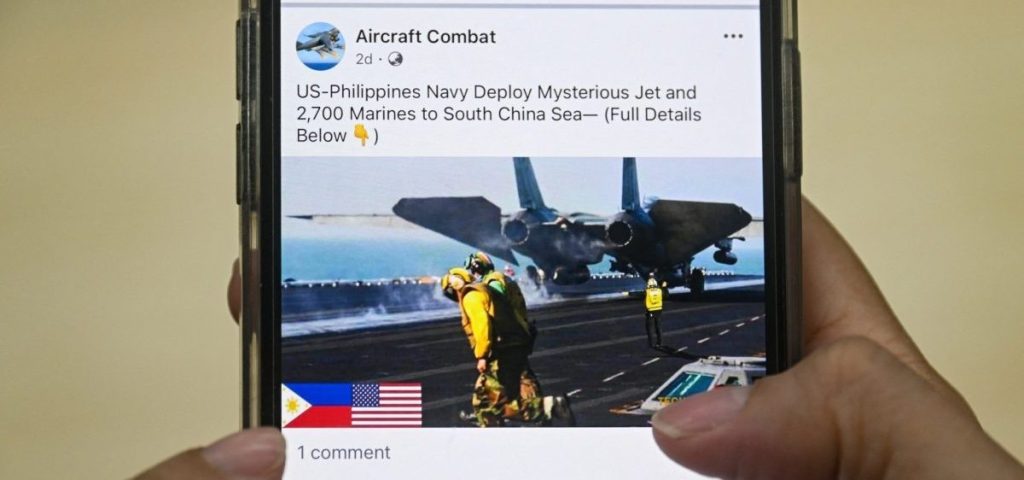AI-Powered Propaganda Fuels South China Sea Tensions
The South China Sea, a region rich in resources and strategic importance, has long been a point of contention between the Philippines and China. While diplomatic efforts continue, the underlying territorial dispute remains unresolved, with both nations engaging in military posturing and issuing public warnings. This already tense situation is being further exacerbated by the emergence of sophisticated, AI-driven propaganda campaigns designed to manipulate public opinion and potentially escalate the conflict. Artificial intelligence has revolutionized the landscape of political manipulation, offering unprecedented opportunities for states to shape narratives and influence public perception on a massive scale.
The escalating use of AI-generated disinformation in the South China Sea dispute is rapidly transforming the nature of the conflict. From deepfake videos depicting fabricated military orders to subtly manipulated audio and video content designed to incite anti-China sentiment and promote US intervention, the lines between reality and fabrication are blurring. This sophisticated propaganda, often disguised as entertainment or legitimate news, is exploiting vulnerabilities in media literacy and fueling public confusion, potentially laying the groundwork for further escalation despite the Philippines’ acknowledged lack of military preparedness for a full-blown conflict. Examples like the viral deepfake of President Marcos Jr. ordering an attack on China, while quickly debunked, demonstrate the potential for AI-generated content to incite panic and distrust.
Foreign actors identified in the Marcos deepfake incident are not the only players in this disinformation landscape. YouTube channels like PH TV, while claiming to offer entertainment, disseminate manipulated content portraying US military activity in the disputed waters, fostering a climate of fear and suspicion. While the true operators of such channels remain elusive, their narratives often align with known Chinese propaganda themes, raising concerns about state-sponsored disinformation campaigns aimed at undermining the Philippines’ position and bolstering China’s regional influence. This aligns with documented cases of Chinese state media utilizing AI-generated videos to advance their narrative in the ongoing dispute.
China’s use of AI in its propaganda efforts extends beyond blatant video manipulation. The nation’s engagement in "cognitive warfare" involves the use of AI-enhanced personas, ostensibly to improve communication but potentially masking a deeper strategy to subtly manipulate and control international discourse. Instances of journalists using AI to modify their speech, while presented as a way to improve clarity, raise concerns about the potential for such technology to refine propaganda delivery and further enhance China’s influence on global narratives. These tactics, coupled with the documented use of AI-generated profile pictures in pro-China social media campaigns, demonstrate a multifaceted approach to manipulating online discourse.
The proliferation of disinformation campaigns in the South China Sea conflict is not limited to geopolitical maneuvering. Financial incentives are also driving the creation and dissemination of AI-powered propaganda. Networks of fake news websites and social media channels, masquerading as legitimate sources, are leveraging AI to generate misleading content, often manipulating old footage to create a false sense of impending conflict, and profiting from the resulting ad revenue. While the direct links between these networks and state actors remain unclear, their output frequently aligns with Chinese narratives, suggesting a convergence of interests between financially motivated actors and state-sponsored propaganda efforts.
The stakes in this disinformation war are incredibly high. With a significant portion of the Filipino population struggling to discern fact from fiction in the digital landscape, AI-generated propaganda poses a serious threat to public understanding and could inadvertently pave the way for unintended escalation. The Philippine government, recognizing this danger, is actively pursuing legislative measures to combat AI-driven media manipulation. However, effective countermeasures require a multi-pronged approach involving not only legislation and diplomatic efforts but also proactive engagement from tech companies, civil society organizations, media literacy advocates, and international collaborations. The escalating disinformation campaigns underscore the urgent need for a coordinated global response to safeguard the integrity of information in an increasingly AI-influenced world. The withdrawal of major social media platforms from fact-checking initiatives further complicates the fight against disinformation, highlighting the need for robust, independent fact-checking networks and stronger local verification efforts to counter the growing tide of AI-fueled propaganda in the region.


